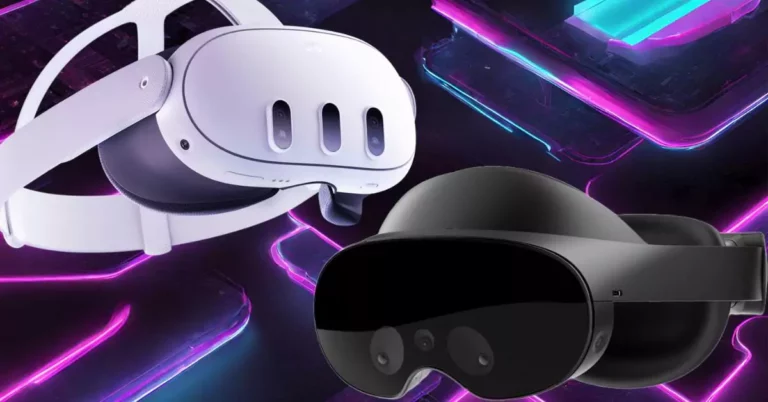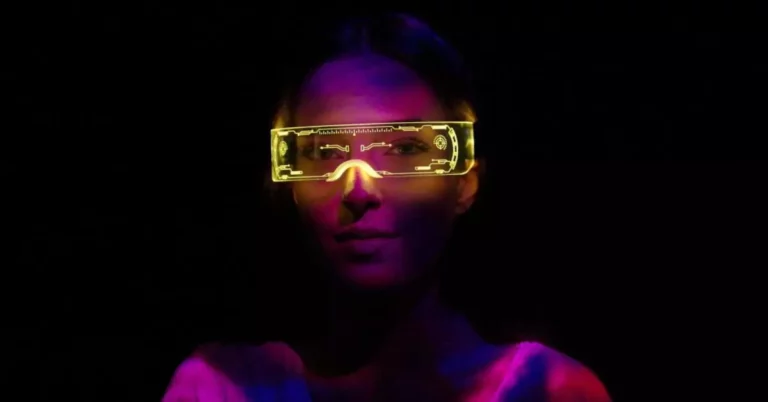Could Metaverse glasses replace smartphones and other devices in the future?
It’s not certain, but XR glasses might replace or complement smartphones and other devices in the future. As technology advances and becomes more integrated into our daily lives, AR glasses could become the main way we communicate, access information, and interact digitally.
Is the future of VR heading towards AR glasses, or are they just an intermediate step?
The Quest Pro seems like a refined and high-end VR headset, but it also has elements of an AR headset. While the demos were impressive, people wonder how a future Quest 3 will compare and when it would be a good time to upgrade to a Pro VR.
With Meta (formerly Facebook) moving toward future AR glasses and other companies joining the competition soon, it’s hard to say if the Quest Pro represents the best of what’s currently available or if it’s just the first step toward what’s coming next.
Is the Metaverse free?
The Metaverse encompasses a wide range of platforms, applications, and experiences, and whether they are free or not depends on the individual platforms and services involved.
Some aspects of the Metaverse might be accessible for free, such as certain social platforms or basic applications. But when it comes to more advanced and feature-rich experiences within the Metaverse, especially those involving cutting-edge VR or AR technologies, may come with a cost.
It is also possible that developers and content creators within the Metaverse might offer both free and paid content, just like in other digital environments.
Why is Meta VR so expensive?
Meta has a line of VR headsets under their hat. And the pricing of VR headsets, including those from Meta, can be attributed to factors such as:
- Advanced Technology: VR headsets require high-resolution displays, motion tracking sensors, powerful processors, and other sophisticated components, all of which contribute to the cost.
- Research and Development: The development of VR technology involves significant investment in research and development to improve performance and user experience.
- Economies of Scale: The headsets are not produced in the same quantities as mainstream consumer electronics, resulting in less cost reduction from economies of scale.
- Competition: The VR market has some competition, but it isn’t as intense as other consumer electronics markets, which may have limited price pressure on the company.
How long can you wear VR glasses?
The duration you can wear VR glasses or headsets, depends on various factors, including the headset’s design, the quality of its materials, and individual comfort levels.
Most headsets are designed to be worn for extended periods, such as gaming or immersive experiences. So they typically come with adjustable straps and padding to improve comfort.
But even with all that, some users might experience discomfort or fatigue after prolonged use due to factors like motion sickness, eye strain, or the weight of the headset.
It’s generally recommended to take short breaks every 30 minutes to an hour to give your eyes and body a rest when using VR glasses for an extended period.
Are VR glasses worth it?
The worth of VR glasses, or VR headsets, depends on your personal interests and use cases. Here are some factors to consider:
- Immersive Experience: VR provides a unique and immersive experience that traditional screens cannot match, making it ideal for gaming, virtual travel, training simulations, and creative experiences.
- Content Availability: The value of VR glasses is tied to the availability of content and applications that interest you. While VR content has been growing, it might not yet match the vast libraries available on other platforms.
- Comfort and Usability: Comfort is essential for extended use. Depending on the headset and your individual preferences, you might find some VR glasses more comfortable and user-friendly than others.
- Budget: VR headsets vary in price, so consider your budget and whether the cost aligns with your usage and the available content.
- Motion Sickness: Some users experience motion sickness in VR, which can affect the overall enjoyment and usability for some individuals.
As the VR industry continues to evolve, it’s also worth keeping an eye on advancements, new content, and potentially more affordable options.
Is VR worth the money?
VR can provide unique and immersive experiences that traditional screens cannot replicate. It is well-suited for gaming, virtual travel, creative applications, educational simulations, and even certain professional training scenarios.
If you enjoy these experiences and find value in them, then investing in VR can be worth the money.
But before purchasing a VR headset, you need to consider your budget, the available content that interests you, and how often you plan to use the VR system.
It’s also a good idea to try VR experiences at a store or with a friend to see if it aligns with your preferences.
What do I need to buy for the Metaverse?
What you need to buy for the Metaverse depends on the specific applications and platforms you want to engage with. Here are some general items you might need:
- VR or AR Headset: Depending on the Metaverse applications, you may need a VR headset, AR glasses, or a mixed reality device to access the virtual experiences.
- Compatible Device: Some Metaverse platforms may require a compatible computer, gaming console, or smartphone to run the applications.
- Internet Connection: To access online VR experiences and interact with others, of course you’ll need a stable internet connection.
- Controllers: VR and some AR experiences might require specialized controllers for interaction within the virtual environment.
- Optional Accessories: Depending on the specific applications, you may also want to consider additional accessories like haptic feedback gloves, motion capture devices, or VR treadmills.
These requirements might change over time given the pace of development in the VR industry.
Can blind people see in the Metaverse?
Blind people typically have limited to no visual perception in the physical world. But virtual reality and augmented reality technologies are primarily visual-based experiences that rely on visual displays.
So it may be safe to assume that blind people may not be able to see in the traditional sense within the Metaverse, as of yet.
However, developers and researchers have been exploring ways to make VR and AR experiences more inclusive and accessible to individuals with visual impairments.
This might involve incorporating non-visual cues, audio feedback, haptic feedback, or other sensory information to enhance the experience for those with limited vision.
How do I access the Metaverse?
Accessing the Metaverse involves interacting with virtual, augmented, or mixed reality environments through specific platforms or devices. But let’s look at some general steps that one has to go through in order to have a VR experience using classic tech and platforms.
- Choose a Platform: Decide which Metaverse platform or application you want to explore. Different platforms offer various experiences, such as gaming, social interactions, virtual events, and more.
- Acquire the Necessary Hardware: Depending on the platform, you may need a VR headset, AR glasses, or a mixed reality device.
Ensure your hardware is compatible with the platform’s requirements. - Install and Set Up: Follow the platform’s instructions to install the required software and set up your hardware.
This might involve downloading applications, connecting the device to your computer or smartphone, or calibrating the headset. - Create an Account: Some Metaverse platforms may require you to create an account and set up a profile.
- Explore and Interact: Once you’re set up, you can explore the virtual worlds and experiences within the Metaverse.
Engage with others, participate in events, play games, or interact with virtual objects and environments.





